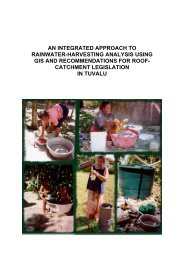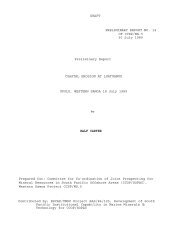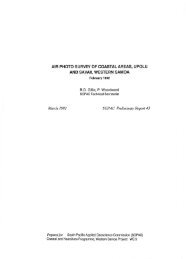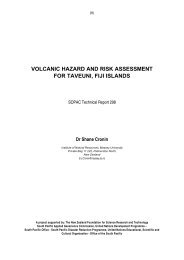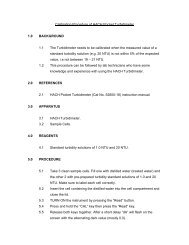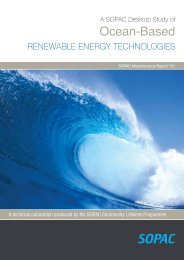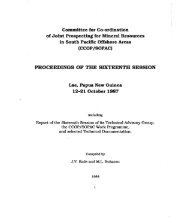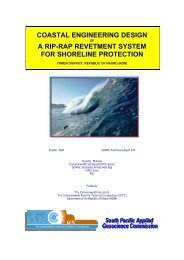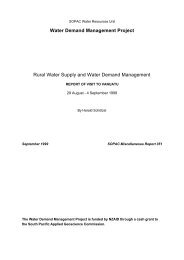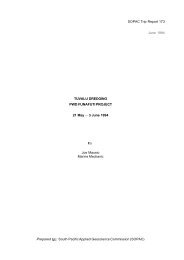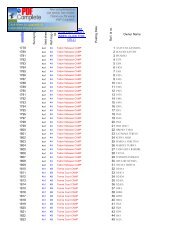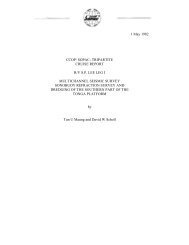Trip report regarding remote sensing activities at ... - Up To - SOPAC
Trip report regarding remote sensing activities at ... - Up To - SOPAC
Trip report regarding remote sensing activities at ... - Up To - SOPAC
You also want an ePaper? Increase the reach of your titles
YUMPU automatically turns print PDFs into web optimized ePapers that Google loves.
APPENDIX II<br />
The following r<strong>at</strong>ing, have been used to process the<br />
s<strong>at</strong>ellite images of the Ba River Delta area. They are based on<br />
equ<strong>at</strong>ions involving the wave length bands scanned by the<br />
s<strong>at</strong>ellite sensors.<br />
BANDS! SPOT ! LANDSAT"<br />
! !<br />
Green band! XS1 = 500/590 nm ! BAND 5 = 500/600 nm<br />
Red band! XS2 = 610/ 690 nm! BAND 6 = 600/700 nm<br />
I.R band! XS3 = 700/890 nm ! BAND 7 = 700/800 nm<br />
1. CHROMATIC RATING<br />
This algorithm is upgrading sediment inform<strong>at</strong>ion in shallow<br />
w<strong>at</strong>er.<br />
If A and B are the peak limits of the histogrammes of the 3<br />
bands, the chrom<strong>at</strong>ic r<strong>at</strong>ing is equal to : rXS2/XS1+XS21,<br />
between A, B.<br />
2. VEGETATION RATING<br />
This algorithm makes it easier to differenti<strong>at</strong>e the<br />
veget<strong>at</strong>ion from the bare soils. It is equal to : rXS3-<br />
XS2/XS3+XS21




